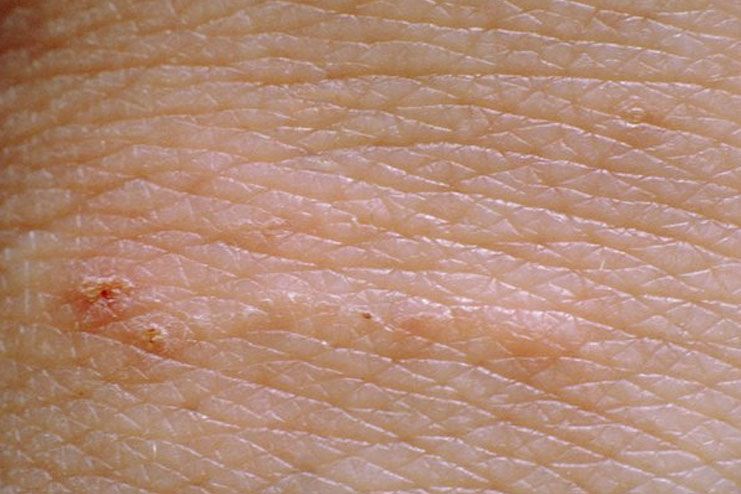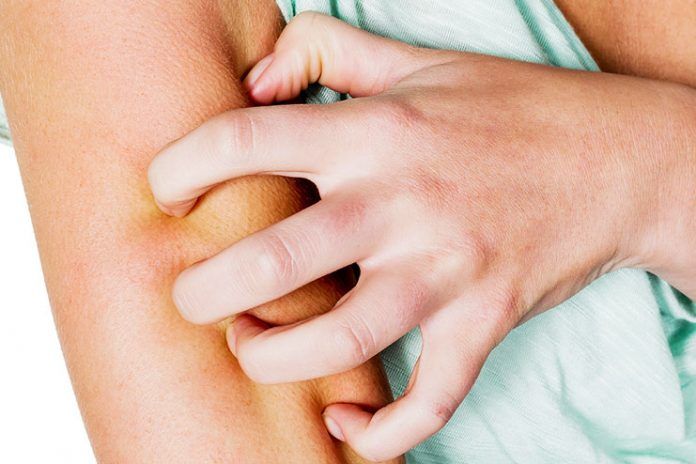Affiliate Disclaimer
Some links in this article are affiliate links. We may earn a small commission if you make a purchase through these links, at no extra cost to you. We only recommend products we find useful to our readersHeard of Scabies? A well-known skin disease that hits about 300 million people each year, worldwide. At any given time, around 130 million scabies cases are reported across the globe. It may seem even more scary when it comes to its highly contagious nature. Be informed and stay safe. Know more about this skin disease through this post.
What Is Scabies? Is It Contagious?
Scabies is a contagious skin infestation caused by Sarcoptes scabiei, an eight-legged mite that can live on the skin for months, if left untreated. Itchy red rashes are formed on the skin as the causative agents reproduce on the surface and borrow into the skin to lay eggs.
This bothersome skin disease is highly contagious and can be transmitted through direct skin-to-skin contact. The disease is transmitted even through infested clothing or bleeding.
Anyone can be affected with Scabies. But the chances are high amongst:
- Sexually active adults
- People in institutional care
- People living in crowded conditions
- Prison inmates
- People in child care facilities
Also, Read: Home Remedies for Rash on Inner Thigh
How to Identify Scabies?
Symptoms for scabies begin to appear four to six weeks after the initial exposure to the causative agent. However, the symptoms may develop early in people who have had scabies before. Relentless itch is the main symptom for scabies.
Major Symptoms For Scabies Include:
- Rashes – consists of hives, bites, bumps under the skin.
- Intense itching (worsens during night)
- Scales or blisters
- Track-like burrows – raised lines are usually grayish-white or skin-colored, formed as female mites tunnel just under the skin surface
- Sores (formed due to continuous scratching at the affected area). If sores become infected, additional antibiotic treatments may be needed to treat the infection.

What Are The Common Sites For Scabies?
In adults and older children, scabies can be commonly seen in body parts like:
- Elbow
- Wrist
- Nipple
- Armpit
- Waist
- Penis
- Buttoks
- Between fingers
In toddlers, babies, elderly or immunocompromised, scabies can be commonly seen in body parts like:
- Face
- Head
- Hands
- Neck
- Soles of the feet
What Is Norwegian Scabies or Crusted Scabies?
Norwegian scabies/crusted scabies is a more severe form of scabies. It is extremely contagious scabies type that develops thick crusts on the skin with thousands of mites and eggs.
- Crusted scabies appear gray, thick and crumbles easily when touched.
- It usually develops in people with weaker immune systems.
- Crusted scabies spreads like normal scabies.
Can Scabies Mites Be Seen?
Each scabies mite is less than half a millimeter in length and thus may just look like tiny black dots and is difficult to spot. A microscope can identify fecal matter, mites, or eggs, from a skin scraping of the infected area.
How To Diagnose Scabies?
Physical examination and inspection of the affected area is the primary diagnosis, usually done by the physician. For further confirmation, the doctor may remove a mite from the skin with a needle or scrape off a section on the skin to obtain the tissue sample. The sample goes through microscopic examination to detect the presence of mites or eggs.
What Is the Treatment For Scabies?
Effective treatment for Scabies consists of topical medications (applied on the skin) like creams, ointments, and lotions to kill scabies mites and eggs. Oral medications are also prescribed by the doctor. The treatment is suggested not just for the patient, but for all the members in contact with the diseased person, as scabies is highly contagious.
- Mites are most active at nights, so medicines may be advised to be applied during nights. The next day morning, medicine may be washed off.
- Entire body from neck to toes may require treatment.
- It is important to follow the doctor’s instructions carefully and repeat the topical treatment for the prescribed period, which generally is for 7 days.
Some common medications used for scabies treatment include:
- 5% permethrin cream
- 25% benzyl benzoate lotion
- 10% sulfur ointment
- 10% crotamiton cream
- 1% lindane lotion
Other medications suggested for relief from bothersome symptoms include:
- antihistamines to help control itching
- antibiotics to kill any infections
- steroid creams to relieve itching/swelling
Ivermectin (Stromectol) an oral tablet is also prescribed as a more aggressive treatment to treat severe or widespread scabies. It is prescribed to people who have crusted scabies, or who sees no improvement after the initial treatment. If the symptoms have not subsided even after four weeks of treatment, consult your physician.
Preventive Tips To Avoid Transmission Of Scabies:
- Avoid prolonged skin-to-skin contact with the one infested with scabies.
- Avoid intimate personal contact with the affected person.
- Do not share belongings like towels, clothing, bedding, etc.
- Be careful about the transmission in schools, rehab facilities, nursing homes, etc.
- Take precautions to avoid reinfection, as Scabies mites can live for 48 to 72 hours after falling off your body. Ensure to wash all the clothing, beddings and towels in hot water that reaches 122°F (50°C). Then dry them in the dryer for at least half hour on high heat.
- Use bleach and hot water to clean the surfaces that may contain scabies mites.
Popular Home Remedies For Scabies:
- Cayenne Pepper: It contains capsaicin that reduces pain when applied on to the skin. The chemical can also relieves from itching.
- Tiger Balm: It helps provide some relief during the waiting period after the completion of the conventional treatment. It reduces inflammation and provides relief from muscle pain and aches.
- Anise Seed Oil: Oil extracted from anise seeds display insecticidal activity. Thus, helps cure scabies.
- Neem oil: It is known to kill scabies mites, and prevents their growth and breeding. It numbs pain and relieves itching.
- Clove oil: The oil extracted from clove has analgesic, antimicrobial and anti-inflammatory properties. Useful to dry up scabies blisters and rashes.
- Rosemary oil: The oil has the potential power to stop scabies infestation. It decreases pain and prevents the development of secondary infections.
- Tea tree oil: It contains antimicrobial constituents called terpenoids with the ability to heal scabies on the skin.
Note: Not all home remedies suit everyone. It is advisable to seek doctor advice before proceeding.
In conclusion, scabies is a contagious skin infestation that can subside with effective treatment and preventive measures. However, it may not be healed overnight, and one may experience itching for some time. During treatments, practice healthy habits like eating healthy, getting some extra rest and exercise to see faster results.


















